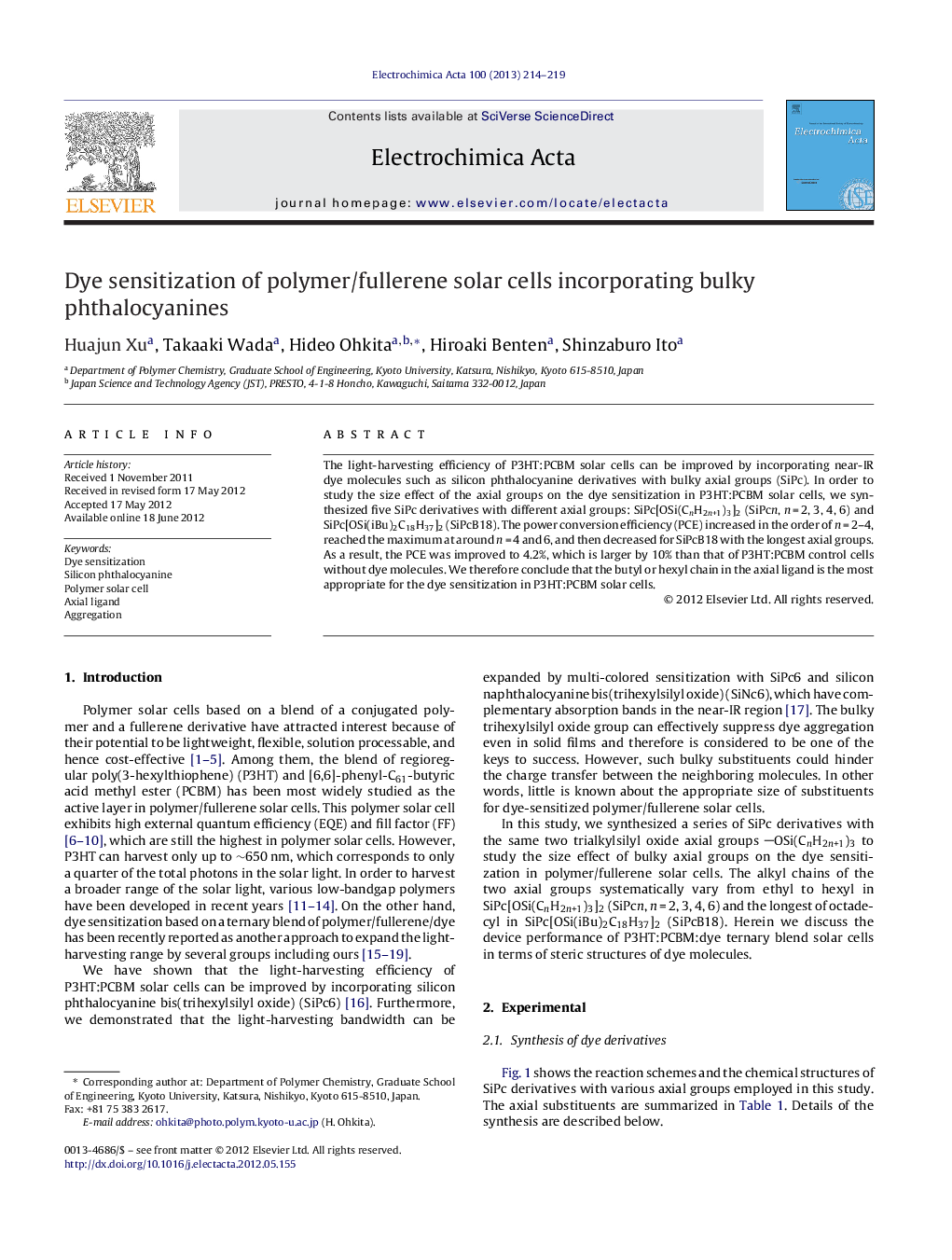| Article ID | Journal | Published Year | Pages | File Type |
|---|---|---|---|---|
| 187344 | Electrochimica Acta | 2013 | 6 Pages |
The light-harvesting efficiency of P3HT:PCBM solar cells can be improved by incorporating near-IR dye molecules such as silicon phthalocyanine derivatives with bulky axial groups (SiPc). In order to study the size effect of the axial groups on the dye sensitization in P3HT:PCBM solar cells, we synthesized five SiPc derivatives with different axial groups: SiPc[OSi(CnH2n+1)3]2 (SiPcn, n = 2, 3, 4, 6) and SiPc[OSi(iBu)2C18H37]2 (SiPcB18). The power conversion efficiency (PCE) increased in the order of n = 2–4, reached the maximum at around n = 4 and 6, and then decreased for SiPcB18 with the longest axial groups. As a result, the PCE was improved to 4.2%, which is larger by 10% than that of P3HT:PCBM control cells without dye molecules. We therefore conclude that the butyl or hexyl chain in the axial ligand is the most appropriate for the dye sensitization in P3HT:PCBM solar cells.
► For dye-sensitized polymer/fullerene solar cells, dyes with shorter axial chains are likely to cause the aggregation and hence cannot contribute to the improvement in the photocurrent. ► Dyes with longer axial chains are hardly in close contact with neighboring molecules and hence hinder efficient charge transfer or charge transport. ► Consequently, the power conversion efficiency was improved to 4.2% for the device incorporating dyes with modest length axial ligands that can cover the conjugation plane of the phthalocyanine ring.
